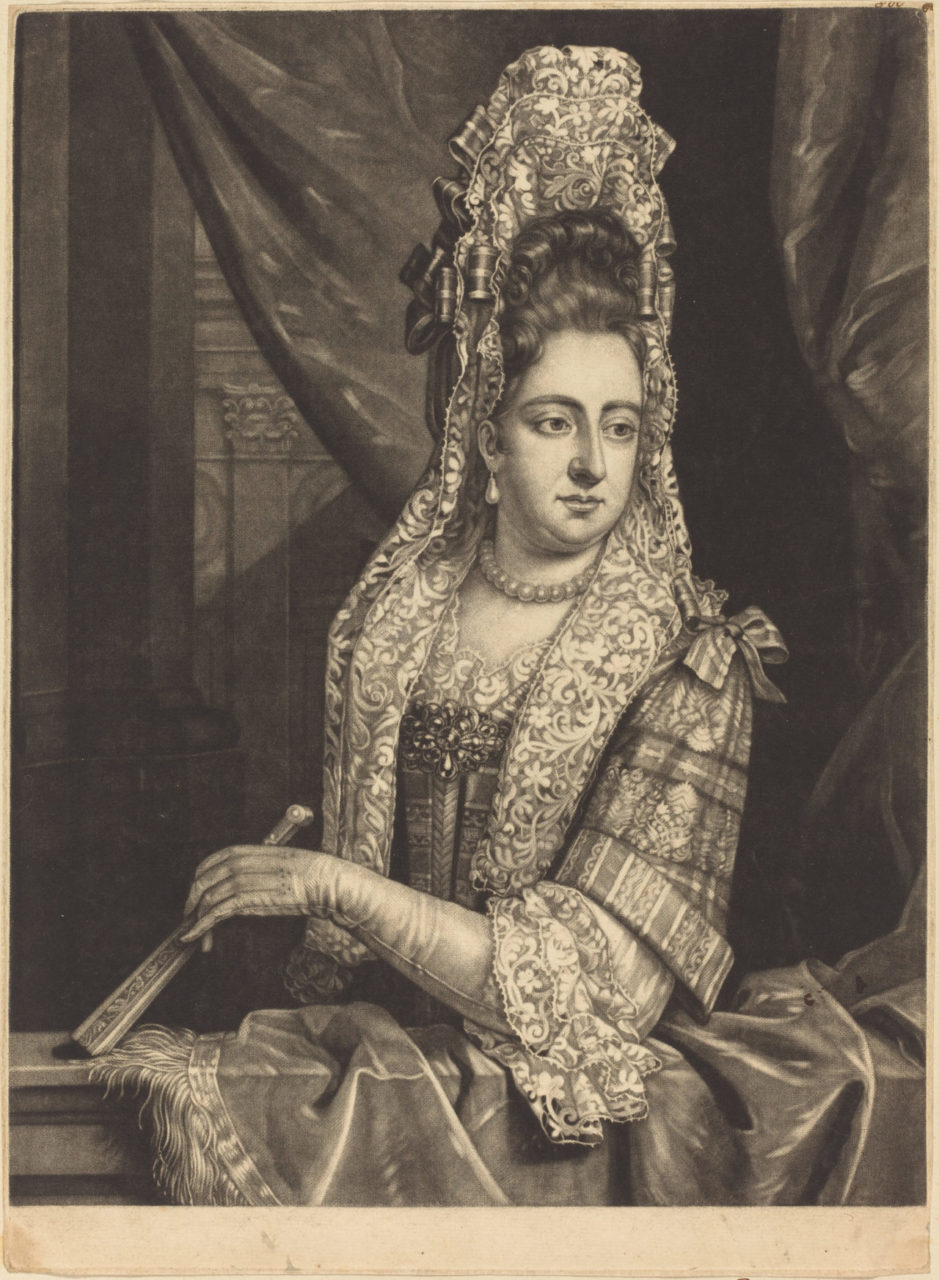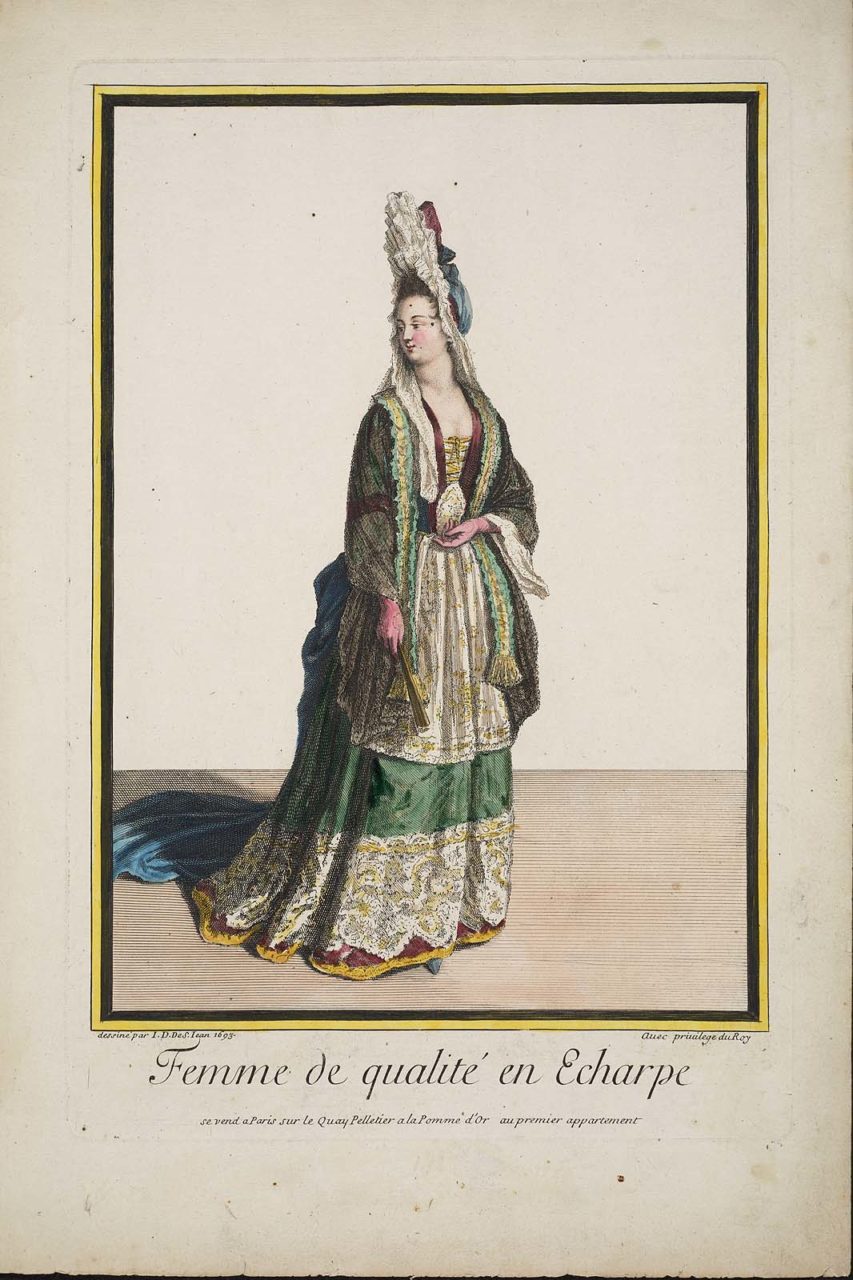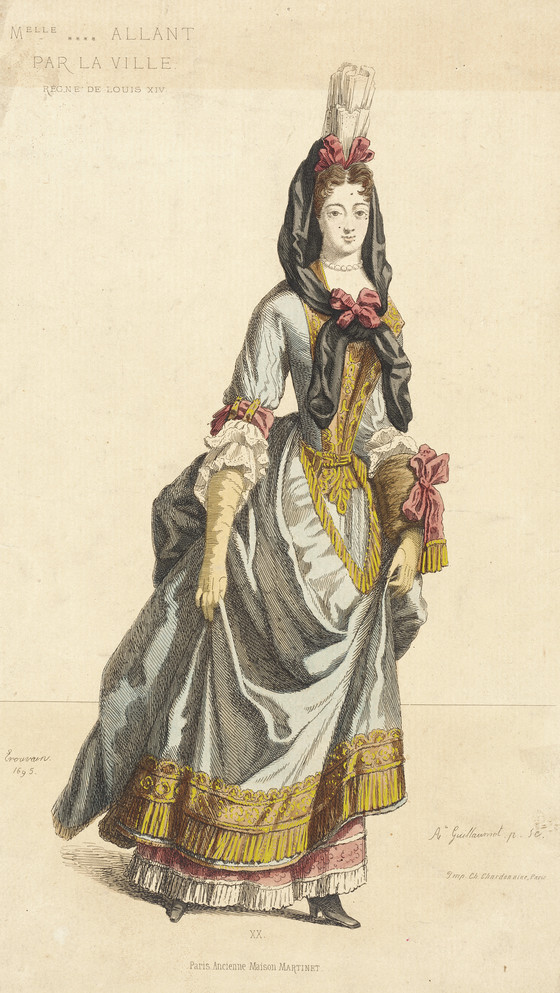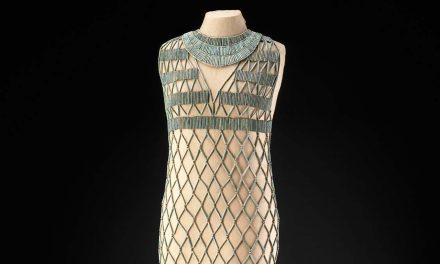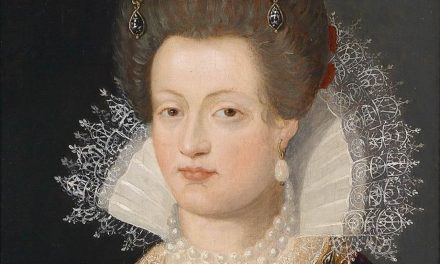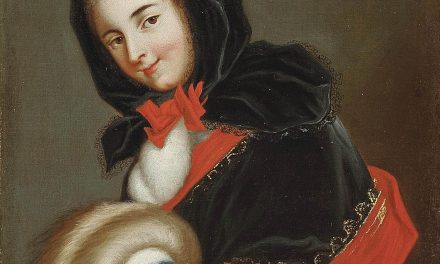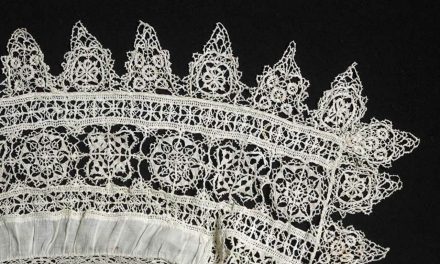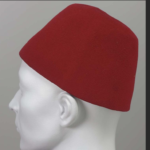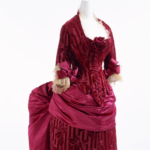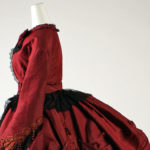A linen cap with layers of lace and ribbon, worn flat and pinned to the back of the head.
The Details
Daniel Delis Hill in The History of World Costume and Fashion (2011) writes:
“The French fontange, or commode as it was called in England, was a small round or oval cap pinned to the back of the head. Attached to the top of the cap was a tall wire frame over which were arranged tiers of lace, ribbons, cutwork, and linen ruffles.” (413)
It became popular in the 1680s and was in fashion both in France and in England. Figure 1 presents Queen Mary II of England wearing a fontange headdress.
The Dictionary of Fashion History (2010) defines a fontange as:
“An indoor linen cap with a small, flat crown behind and a tower of lace or lace and linen frills in front, kept erect by the commode, a tall wire frame.” (83)
Charlotte de Lorraine-Armagnac (Fig. 2) wears an elaborate fontange in a 1695 print portrait.
According to Fashion, Costume, and Culture: Clothing, Headwear, Body Decorations, and Footwear through the Ages:
“The style enchanted the king and other women began copying the style. At first the style consisted of a small pile of curled hair with ribbons and bows just above the forehead. The fontange eventually grew into a high tower of curls piled over a wire foundation, sometimes with false curls. The style was so often worn with a starched linen frill in the front that the linen cap came to be called a fontange as well.
The height of the fontange related to a general trend in the seventeenth century for fashion to emphasize a vertical line. As the fontange grew taller, women had great difficulty securing it on their heads. Then, when finally secured, the fontange often slipped to one side or another. Women found the instability of the fontange so frustrating that many began suggesting that the heads of infant girls should be flattened to better hold the fontange later in life. No evidence of anyone actually doing this exists and the style fell from fashion in the early eighteenth century.”
Styles of fontange were carefully picked to match the dress they worn. The woman in Figure 3 wears a fontange that coordinates with the color of her dress.
Susan Brown in Fashion: The Definitive History of Costume and Style (2012) describes the origin of the term:
“The fontange cap was worn flat at the back of the head, rising up high above the crown in layers of lace and ribbon, often supported by a wire-frame commode. It was named after Madame Fontange, who originated the ribbon style.” (139)
Fig. 1 - John Smith after Jan van der Vaart (English, 1652 - 1742). Queen Mary, 1690. Mezzotint on laid paper; 33.9 x 24.9 cm (13 3/8 x 9 13/16 in). Washington: National Gallery of Art, 2001.118.46. Paul Mellon Fund. Source: NGA
Fig. 2 - J.D. de Saint-Jean (French, died in 1694). Femme de qualité en Echarpe, 1693. Engraving and etching with hand-applied color on laid paper. Boston: Museum of Fine Arts, 44.1156. The Elizabeth Day McCormick Collection. Source: MFA Boston
Fig. 3 - A. Guillaumot (French). Melle Allant Par La Ville, 1695. Hand-colored engraving; 27.94 x 15.86 cm (11 x 6 1/4 in). Los Angeles: Los Angeles County Museum of Art, M.83.161.131. Gift of Charles LeMaire. Source: Los Angeles County Museum of Art
References:
- Brown, Susan, ed. Fashion: The Definitive History of Costume and Style. New York: DK Publishing, 2012. http://www.worldcat.org/oclc/840417029.
- Cumming, Valerie, C. Willett Cunnington, Phillis Cunnington, Charles Relly Beard, and C. Willett Cunnington. The Dictionary of Fashion History. Oxford ; New York: Berg, 2010. http://www.worldcat.org/oclc/1008259246.
- “Fontange.” Wikipedia, July 20, 2018. https://en.wikipedia.org/w/index.php?title=Fontange&oldid=851208620.
- “Fontange.” In Fashion, Costume, and Culture: Clothing, Headwear, Body Decorations, and Footwear through the Ages, edited by Sara Pendergast and Tom Pendergast, 530-531. Vol. 3, European Culture from the Renaissance to the Modern Era. Detroit: UXL, 2004. Gale Virtual Reference Library (accessed September 25, 2016). http://libproxy.fitsuny.edu:2200/ps/i.do?p=GVRL&sw=w&u=fitsuny&v=2.1&it=r&id=GALE%7CCX3425500331&asid=30953f91b80a6600411422d378a05ef6.
- Hill, Daniel Delis. History of World Costume and Fashion. Upper Saddle River, NJ: Pearson Prentice Hall, 2011. http://www.worldcat.org/oclc/768100950.


